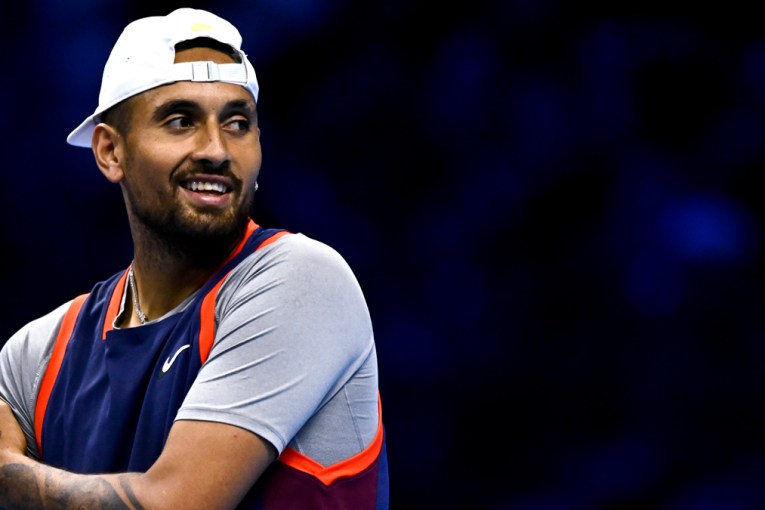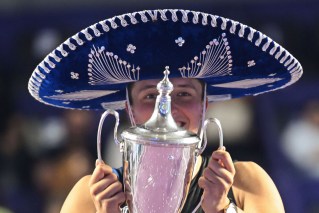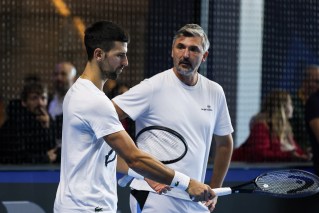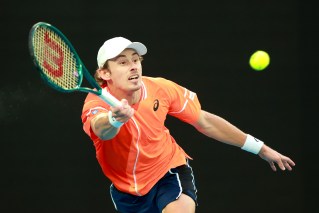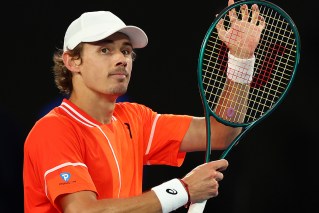Fluoro tennis attire an unfair advantage?
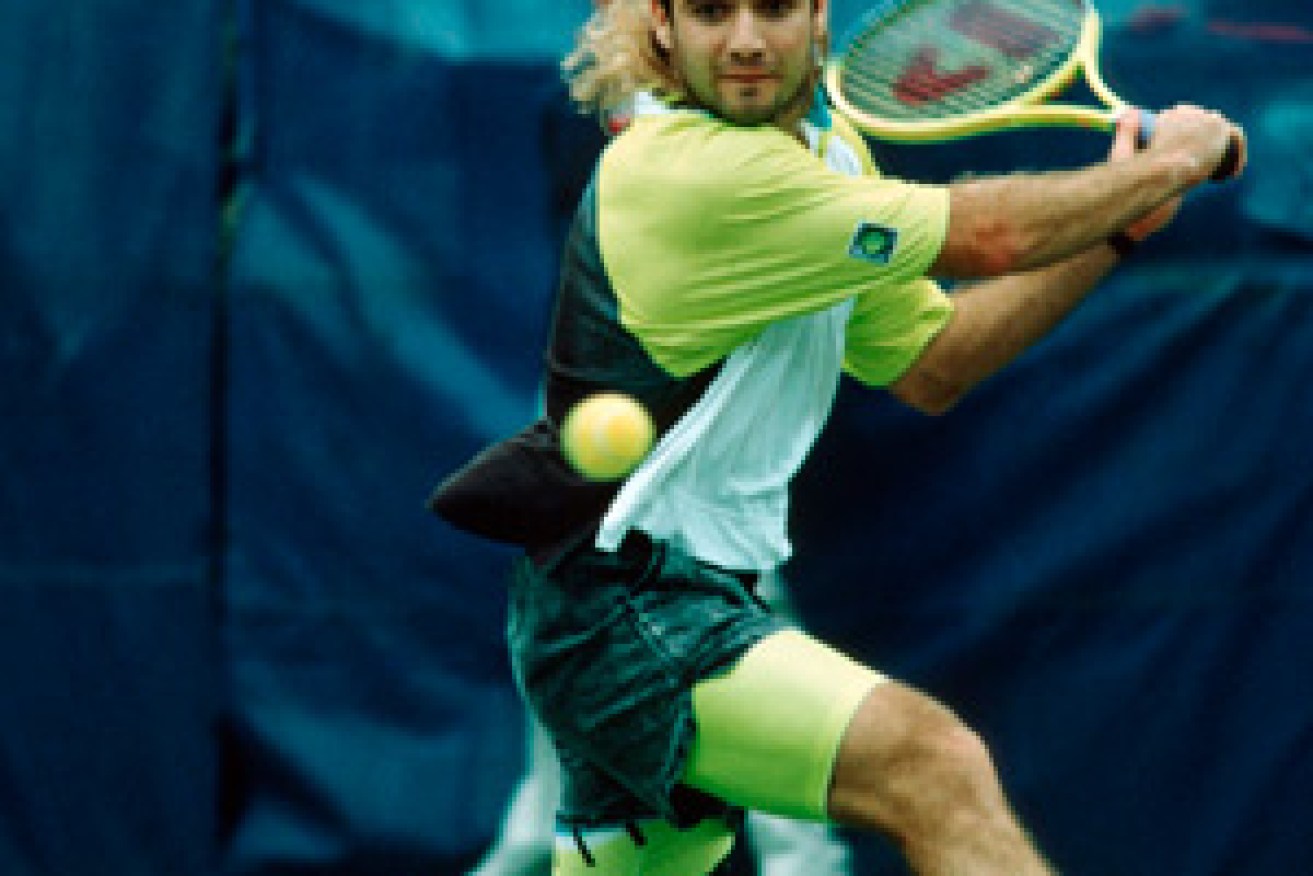
Agassi did things his own unconventional way early in his career.
All eyes have been fixated on Nike’s fluorescent fashion range since the 2015 Australian Open kicked off on Monday.
Spanish player Rafeal Nadal dazzled in a bright pink t-shirt and fluoro yellow sweatbands when he won his first match at a Grand Slam since Wimbledon following injury and illness on Monday.
Swiss star Roger Federer also stood out in a high-vis t-shirt, along with Andy Murray in a lime green top.
But the player wearing the brightest outfit was Australia’s rising star Thanasi Kokkinakis, who sealed an astonishing win against the world’s No.13 Latvian Ernests Gulbis while wearing eye-popping, head-to-toe fluoro.
Nike ladies players wearing fluoro hues include world No.1 Serena Williams, Victoria Azarenka, Sara Errani and Sabine Lisicki.

Belarusian Victoria Azarenka celebrates after victory against Sloane Stephens and wears fluoro yellow sweat bands.
But it begs the question, is it a distraction for their opponents?
On day one of the the event, four-time grand slam doubles winner and commentator Liz Smylie compared one male tennis player to “looking like a tennis ball”.
A description about the fluoro range on Nike’s website says: “The spring 2015 Nike Tennis collection was conceived to utilise striking colour choices and disruptive patterns as a competitive advantage for performance tennis.”
“Color inspiration came from the phenomenally vibrant street art of the city of Melbourne.”
A Nike spokesperson said when designing new products for its athletes, they seeked to balance form and function.
“For our Nike athletes competing at the Australian Open, we have coupled the latest in product innovation with bold and impactful designs that give players confidence on court, helping them perform at their best,” the spokesperson said.
The 2015 Association of Tennis Professionals Rulebook does not state anything about offensive or off-putting tennis attire, but rather focuses on the size and placement of sponsor logos.
A Tennis Australia spokesperson told The New Daily they had not received any complaints from players about the luminous tennis wear, which wasn’t against ATP regulations.
“The official grand slam rules on dress and equipment are simply that players must present themselves for play in a professional manner, in clean and customarily acceptable tennis attire.
“There are no restrictions on colour at the Australian Open, unlike Wimbledon where players are required to wear white.”
The Wimbledon Championships includes a strict dress code for competitors who must wear all white at the All England Lawn Tennis and Croquet Club.
Surely the fluoro yellow kits make it harder for the opposition to pick up the ball? #tactics #AusOpen
— Tim Nilsson (@timnilsson4) January 19, 2015
In the eighties, the eighties
Former Australian tennis champion Wally Masur compares the clothing design on the courts this season to those worn during the 1980s as a marketing ploy by the designers, rather than a distraction.

Former world No.1 Andre Agassi’s personal flare and attitude was expressed through his style. Agassi wears Nike during the 1980s. Photo: Sneakerpedia
“It might be a personal thing; some players might be distracted,” Masur says.
“When I played it was pretty sedate. In the 80s there were some pretty weird designs, but I can’t remember it ever being a problem.
“The Australian Open is an opportunity for manufacturers to launch a new range. They have to move product, and with the likes of (Nick) Kyrgios and Kokkinakis, they’ve got young kids who appeal to a younger audience.
“Tennis is entertainment and it’s a business, so I think it’s great we’ve got both the tradition of Wimbledon and we’ve got this ability to be a bit louder and a little bit more contemporary.”
Masur says technology in tennis across the board is contributing to a players “competitive edge”.
“The rules of tennis have not changed very much, but those complexities, like athletes and how they train off the court, the science behind it has come so far,” Masur says.
“Athletes are always looking for that competitive edge. Then you start to talk about footwear and clothing – that neoprene and all the stuff they wear now is so light.
“Tennis is no different than any other sport. The science behind it is evolving.
“It’s part of the reason why you’re seeing improved performance.”
On-court distractions
Who could forget when US siblings Venus and Serena Williams burst onto the tennis scene during the 1990s, with their hair braided and covered in beads, causing much controversy?

Tennis stars Serena and Venus Williams caused controversy with their hair beads which distracted their opponents. Photo: Getty
When the sisters moved around the beads made a ‘swishing’ and ‘clicking’ noise with some falling onto the court during play.
Players complained and eventually the pair were threatened they would lose points if they lost their beads.
Tennis Works director of tennis Chris Guy says players who “grunted” on court also posed a distraction.
“I think grunting is a little bit to do with it, more so in the women’s game at the moment, just because of the pitch of it,” Guy says.
“I’d say more so the crowd at grand slams. If you saw a match between Kokkinakis and Ernests Gulbis, Gulbis got psyched out by the crowd that night, that’s for sure.”
